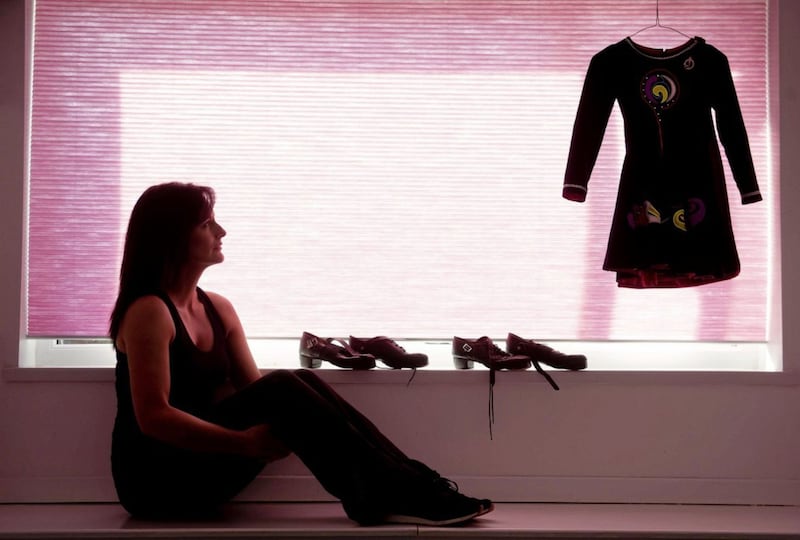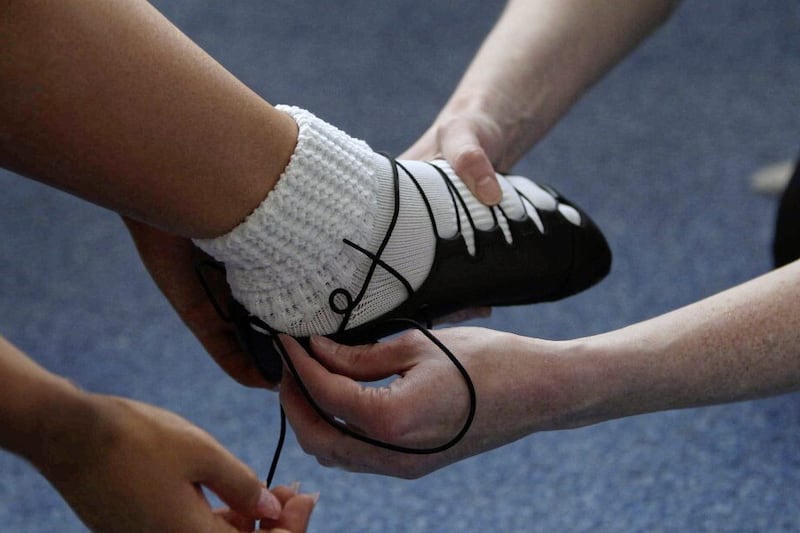JOINING an Irish dance class is a rite of passage for many youngsters; a celebration of culture or an after-school activity to encourage focus and competitiveness. But with a greater emphasis on health and fitness these days, more people are recognising the benefits of dance on both body and brain.
It's not just that Irish dancing is a fast-paced cardiovascular exercise that improves overall heart and lung health, but it builds stronger bones, tones and strengthens muscles and provides a workout for the mind as well, as dancers learn ever-changing steps and formations.
Then there's the social aspect too; forming friendships, building self-esteem, learning to express emotions through dance, which all help to contribute to better mental health.
Two years ago Irish dance hit the headlines as a relevant form of fitness when NFL star Alex Collins revealed how it had transformed his career. The Baltimore Ravens running back took up Irish dancing in 2011 after he was introduced to it by the daughter of his high school football coach.
Initially sceptical about how Irish dance could have a positive impact on his fitness, he quickly realised it helped strengthen his lower body, leading him to become "more explosive" on the field.
This year the Aisling School of Irish Dance, based in Holywood, Co Down, and run by four-times Northern Ireland Dancing Championship winner Denise Catney, celebrates its 20th anniversary. The north Belfast teacher, who learned her craft at the Patricia Mulholland School of Irish Ballet and Dance, says there are multiple benefits to learning Irish dance.
A purveyor of Festival dance and Irish ballet, she sees it not just as a sport, but as an art form which encourages creativity, communication skills and confidence.

“Of course there's the fitness aspect to it,” Denise says. “It certainly makes you more aware of how fast you can move and how high you can jump. You have to be fit to perform on stage for long periods of time, changing costumes, wearing pumps one minute, then heavy shoes the next.
“When I started dancing with my two sisters, fitness wasn't discussed the way it is now. People weren't as hungry for it then. We were just expected to be able to sustain our fitness levels to perform properly, which we did through hours of practise. But the fitness element of Irish dance is definitely more appreciated now.
“But there's a whole spectrum of benefits, not just physical. In this day and age when there's such an overload of social media, I can see how that impacts the young girls coming to classes. Irish dancing helps take their focus away from their iPhones or computer screens and helps them to concentrate on that sense of community, encouraging them to appreciate teamwork and form friendships. That sense of community, I think, is vital for good mental health.”
Denise first took up dancing at age three when she accompanied her older sister Clár to the home of Patricia Mulholland for an audition. Denise wasn't there to take part but when the teacher asked the youngsters to dance around her room and Denise had no option but to join in, Patricia singled her out as the dancer.
It became a way of life for Denise and in 1999 she gave up her job as a medical statistician to open the Aisling School of Irish Dance.
At present she teaches up to 105 girls aged from four up to early 20s and from different backgrounds, creeds and cultures and says she has seen some amazing transformations over the years, not just in terms of dance progression but in personalities too.
“I've seen little ones cry at the start, they're so nervous and you have to take them by the hand,” Denise says. “Then within months, they're dancing on stage in front of hundreds of people. Gaining that confidence can only stand them in good stead for the rest of their lives.
“I was an extremely shy child and wasn't good at expressing my emotions but Festival dance and Irish ballet taught me how to interpret a piece of music and express emotions through movement. We had to reflect what was happening in a piece of music through our dance.
“There are great benefits from that, moving forward into adulthood and we can always return to that place when we need to. Performing in front of people is life affirming and self-esteem enhancing.”
To Belfast woman Lauren Early, a six times World Champion and All Ireland Feis winner, who toured with Michael Flatley's hit productions Lord of the Dance and Feet of Flames, Irish dancing as a sport is something she is passionate about.
Recognising that other competitors could better their skills by improving their fitness levels, she set about creating an online dance programme which has helped revolutionise it.
Lauren, who also won the Ulster Championships 12 times, noted that many young dancers were picking up injuries or pulling muscles as a result of not being adequately fit. So she joined forces with her own fitness trainer, Robert McAvoy, five years ago and the pair published a book on strengthening and conditioning for Irish dancers.
Since then, along with a team of coaches, Lauren has established an online fitness programme, Reaching New Heights, with around 1,600 dancers from all over the world taking part.
“As a sport, Irish dancing isn't widely studied and therefore we see children getting injuries and then not being able to dance," Lauren says. "A lot of this is down to fitness levels. To remain injury free, Irish dancers need to train properly. And to win, you need to eat the right food and practise hard.
“You need to be fit to make it through a dance. You can max out your heart rate in seconds. So Robert and I got together and started working on Reaching New Heights to help dancers by targeting the specific skills needed for Irish dancing.”
The programme offers dancers a six-month online fitness training course to enhance stamina and strengthen the body, with courses in dance training, flexibility, injury rehabilitation and nutritional support. Dancers from Australia and the US have signed up to Reaching New Heights, as well as from both the UK and Ireland.
“Being fit gave me that extra edge and helped me to get to the top of my sport,” Lauren says. “Even from a young age I wanted to be a world champion, so I ate well and trained a lot. Working on strengthening and conditioning exercises helped me get to where I wanted to be.”
Like Denise, Lauren first got into Irish dancing at a young age, along with her two sisters. But while Denise teaches Festival and Irish ballet, Lauren fell in love with Feis dancing and through the Doherty Petri school, took part in competitions, winning many.
When she wasn't competing, she found time to slot into Michael Flatley's world-touring dance troupes. The hours were long, the dancing intense and her fitness levels were put to the test but she loved the experience.
Lauren no longer competes but spends her time helping other dancers reach the top of their game.
“I still train at the gym three or four times a week because this is my career now,” Lauren says. “If you want to get fit, dancing is a brilliant way of doing so. And if you want to be a winner, you need to be in good shape.”








